Frillitunia: varieties, planting and care
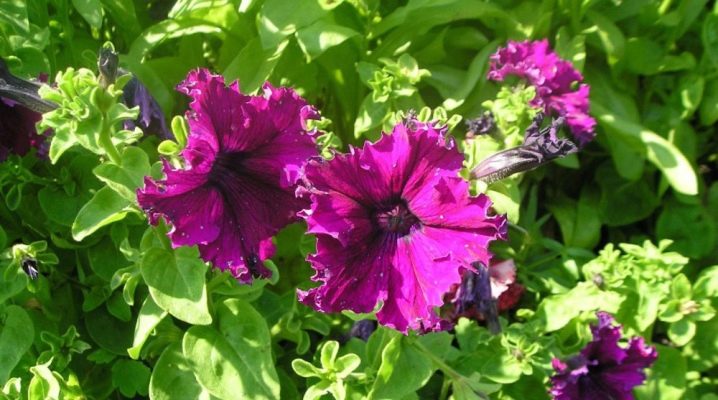
Many garden plots are decorated with beautiful flowers. Petunias are not uncommon, they are a familiar culture. However, not everyone knows that some of its varieties are especially effective. These include frillitunium. This delicate flower with a fringed edge leaves no one indifferent. In addition to wavy petals, the culture is distinguished by a huge, compared to ordinary petunia, the size of the buds. Let's take a closer look at this luxurious plant.
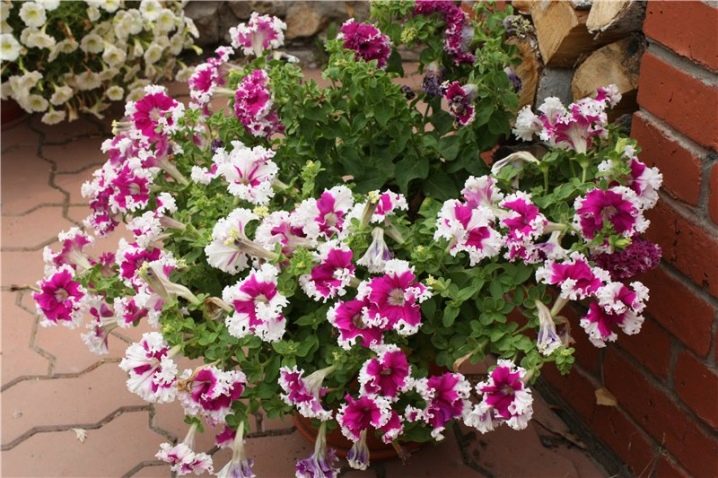
Description
Frillitunia is a subspecies of hybrid petunia. There are several varieties of it. They all differ in the color of the petals and some individual characteristics. However, several common characteristics can be distinguished. It:
- large size of flowers (diameter reaches 10 cm);
- the shape of the flowers, reminiscent of a funnel or mini-gramophone;
- wavy, like lace edges of the petals;
- compactness and neat shape of the plant;
- the usual leaves are green.
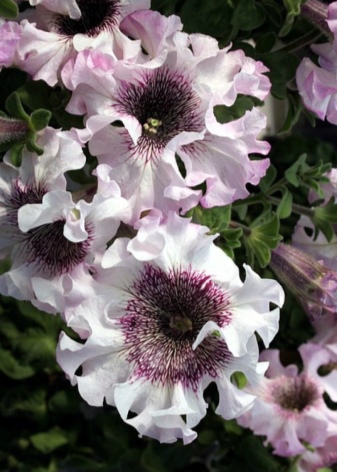

The color of the flowers is variable. These are dazzling white, bright and pale pink, juicy cherry, red, lilac, burgundy shades. The colors are bright, clear, very expressive. Some varieties have a two-tone color. For example, a combination of white and purple colors looks impressive. The bush can grow up to 30-40 cm.
Usually the culture has the shape of a ball, although ampelous varieties have also been bred today. Stems of plants are strong, densely covered with greenery. Flowers usually appear in early summer and delight with their beauty until late autumn. For growing crops on the street, large, but mobile flowerpots or containers are chosen. The fact is that if frillitunium is in the open air, in case of unfavorable weather changes, it should be brought indoors or under a shed.
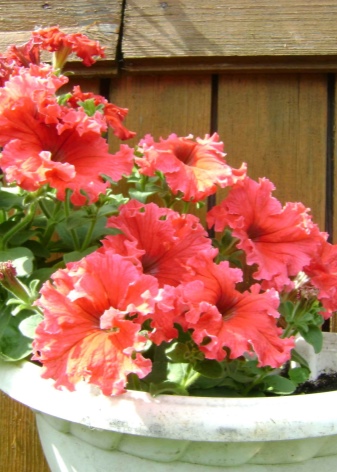
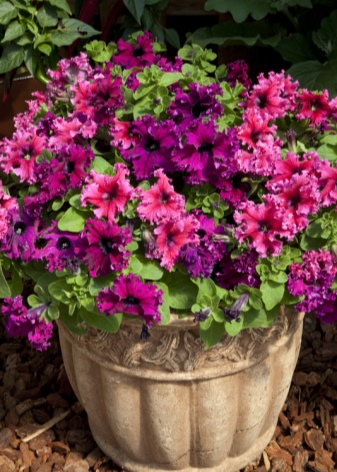
How is it different from petunia?
As already mentioned, frillitunium is a hybrid. In other words, it is a large-flowered petunia. This hybrid is distinguished from the basic varieties of culture by the peculiar "ruffles" of the petals and the special tenderness of the plant. Unlike petunias, the crop is more sensitive to bad weather conditions.
Due to strong gusts of wind, openwork flowers can lose their beauty. Plants don't like rain either. Thin petals break, become lethargic and lifeless.
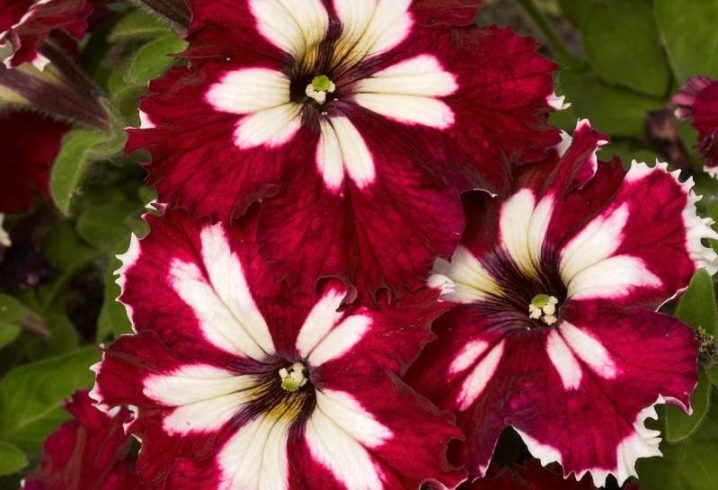
The best solution would be to grow flowers in locations protected from the elements. For example, it can be a veranda, gazebo or balcony. So you can enjoy lush flowering without worrying about the health and preservation of the decorativeness of the plants. As for the color of flowers, frillitunium does not differ from other species. Shown here is the same palette of pink, purple and red petunias. There are also many beloved snow-white flowers.
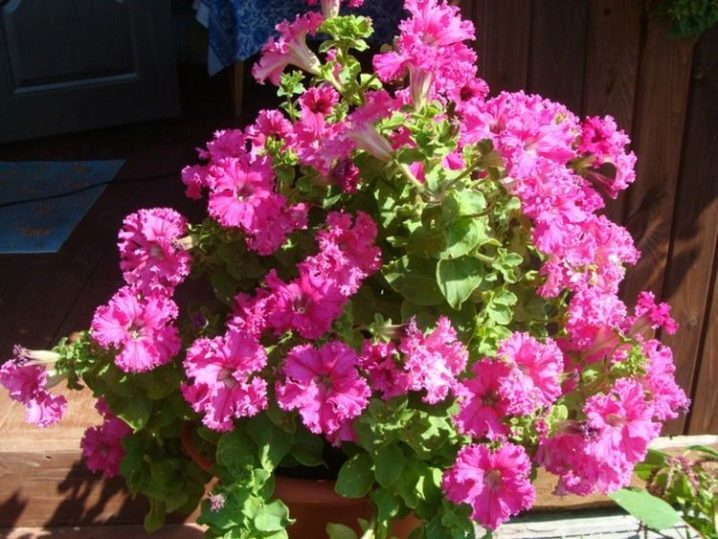
Popular varieties
To date, many varieties of frillithunia have been bred. The difference is mainly in the color of the flowers. The most popular are several varieties.
- "Burgundy" - as the name implies, it pleases flower growers with wavy flowers of a rich cherry tone.
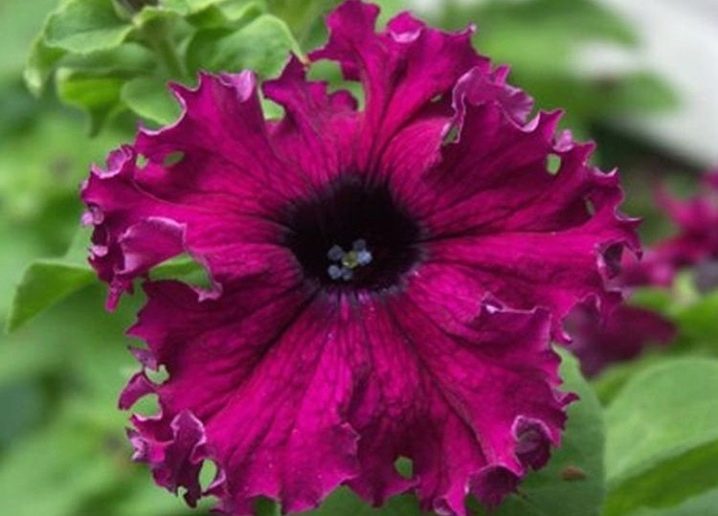
- "Brazilian Carnival" - a variety with a "telling" name. Incredibly elegant mauve flowers with an openwork frill resemble the magnificent costumes of girls participating in the famous carnival.
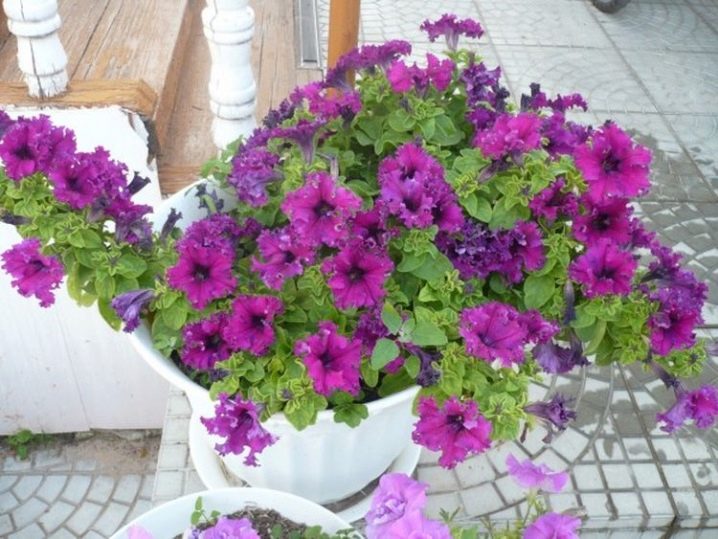
- "Crinoline pink" differs in bright pink large flowers.
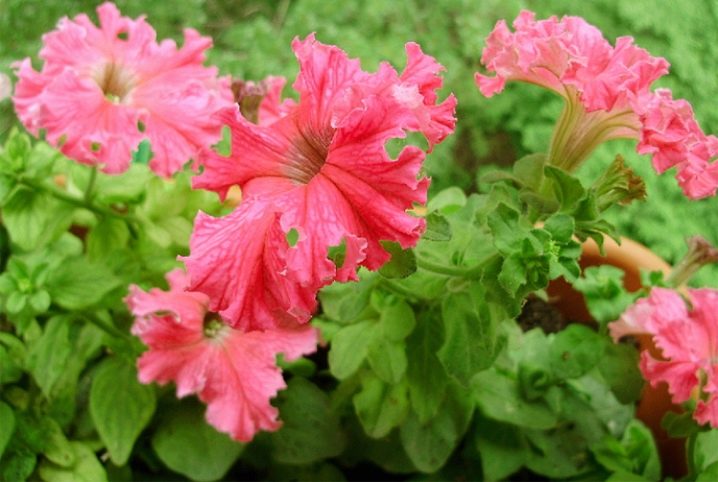
- "White" and "Snowflake" - very beautiful white frillithunias.
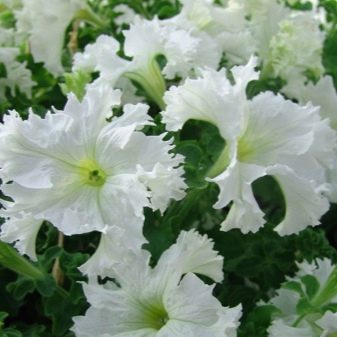

- "Butterfly F1" - openwork pink miracle.
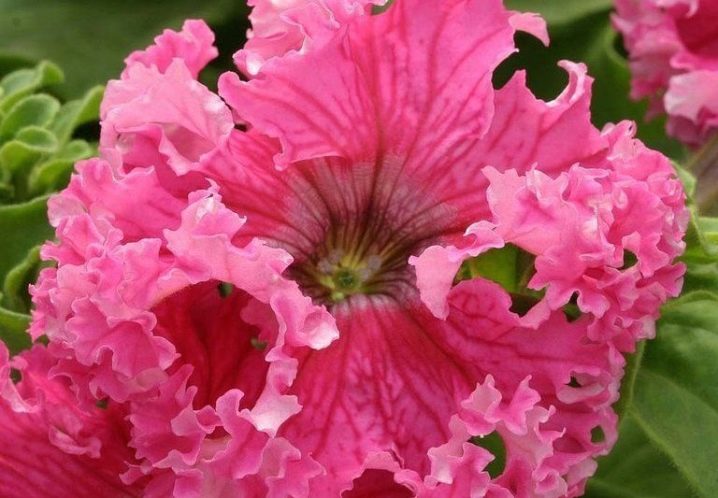
- "Formula mix" makes it possible to grow a spectacular flower bed of snow-white, pink, raspberry flowers from one bag of seeds.

- "Daiquiri" - a mixture that includes flowers of white, deep pink and wine tones.
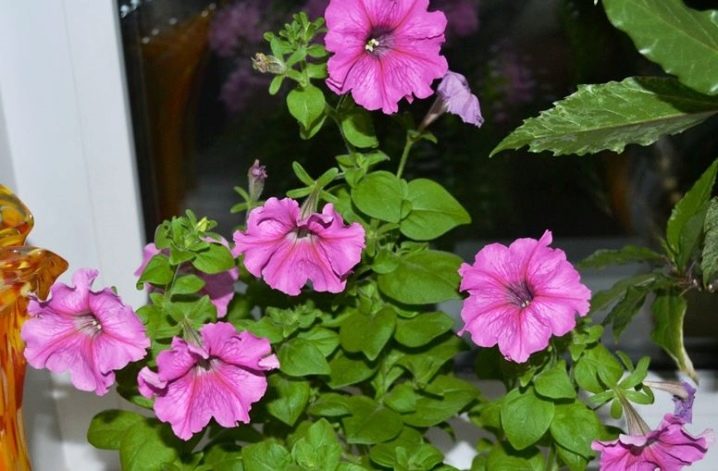
- "Inspiration" combines white and watermelon shades.
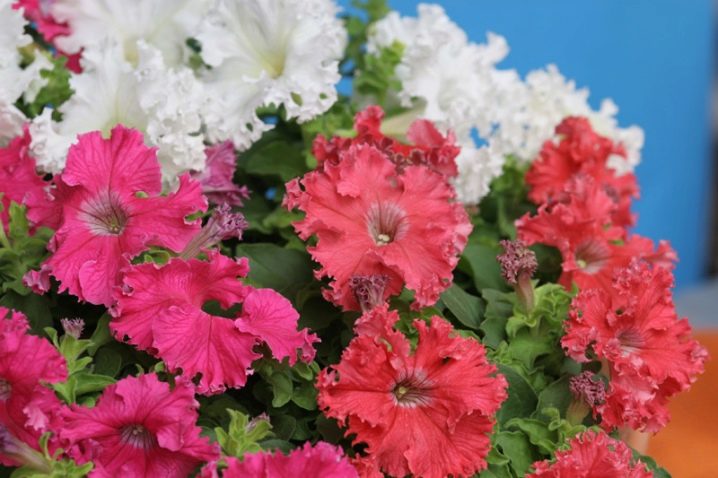
- "Express ruby" - a variety that represents lush flowers of a ruby-purple hue that will not leave indifferent any gardener.
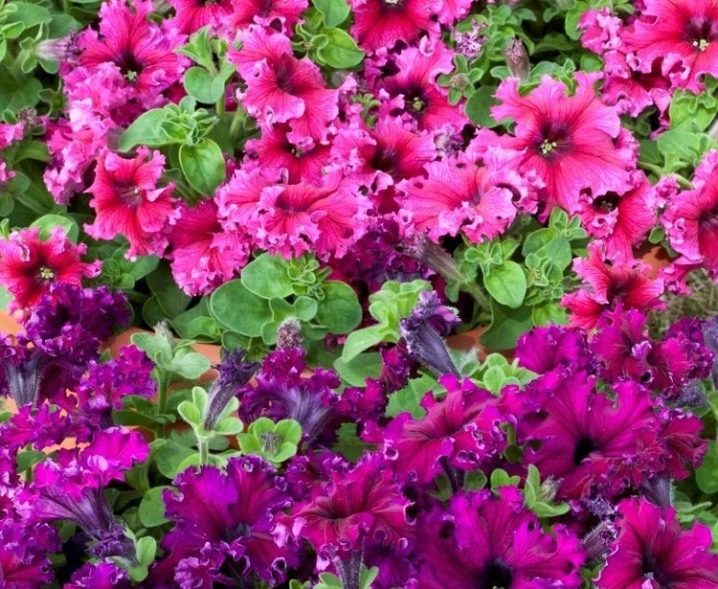
Growing features
Frillitunia is very beautiful, however, in the pursuit of decorativeness, breeders overlooked other properties of the culture. Openwork flowers cannot stand drafts. The need to protect the petals from water has already been mentioned earlier. Therefore, in regions with unstable weather conditions, the culture is moved as needed. At the same time, frillithunias are photophilous.
For planting, it is worth choosing a light nutritious soil. It should be air permeable and have a neutral acidity level. The size of the container for a flower is selected based on its dimensions (5 liters per one bush). Don't forget about the drainage layer. Stagnation of water at the root system negatively affects the plant.
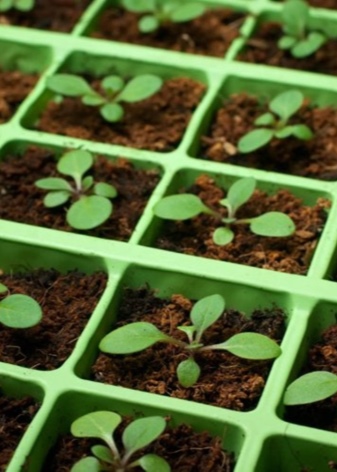
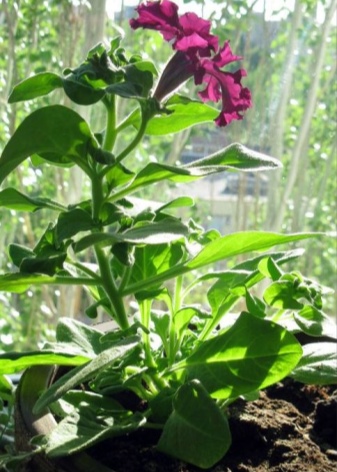
Fertilizers
Frillitunia needs additional nutrition. This is not surprising, since it takes strength to form large flowers. The same applies to the abundant and long flowering, pleasing to the eye. The plant should be fertilized from the moment of planting in the ground. The frequency of procedures is 10 days. As the first top dressing, a complex composition for petunias is used. Then you can begin to administer drugs with a lower nitrogen content and a higher dose of potassium.
The enrichment of the culture with valuable trace elements allows you to maintain a healthy and blooming appearance of the bushes until autumn.
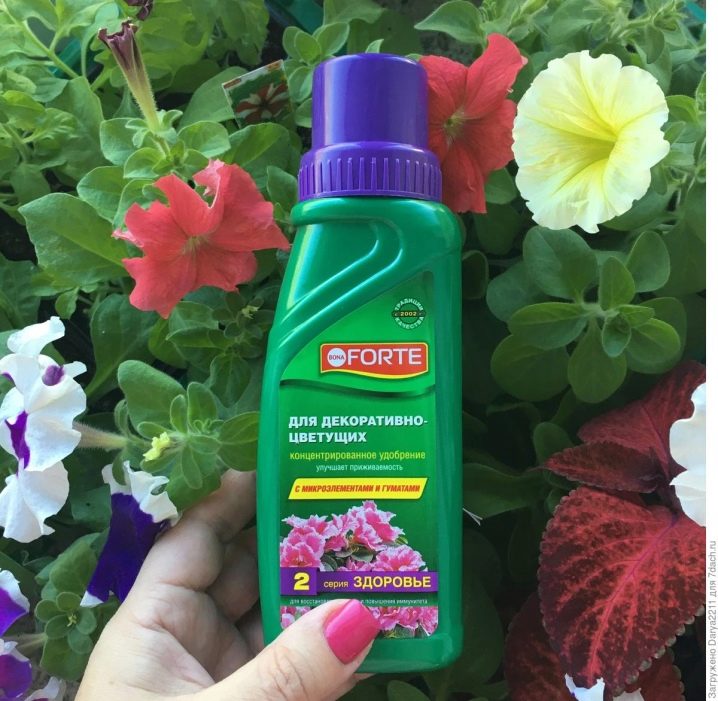
Watering
The soil should not be allowed to dry out, but waterlogging is also undesirable. You should focus on the state of the topsoil. If you forget about the terry beauty and leave her without watering for a long time, she will simply drop the flowers.
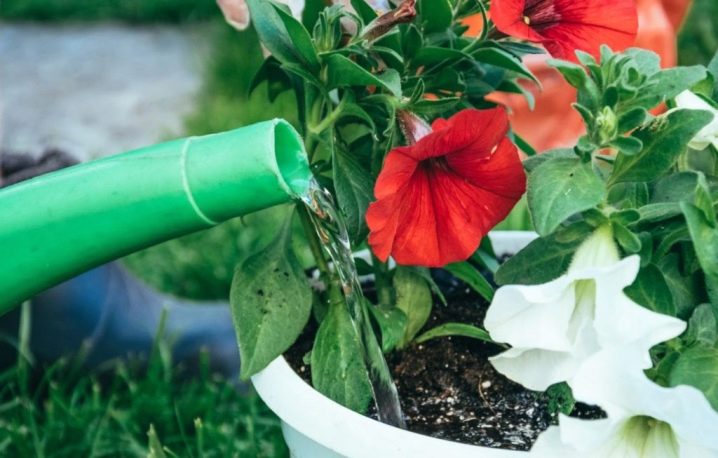
Diseases and pests
The green parts of the plant secrete a sweet juice that becomes a welcome treat for many pests. Those that can be seen are removed from the plants. Then the flower is treated with special preparations. Insecticides and fungicides are sold at flower shops.
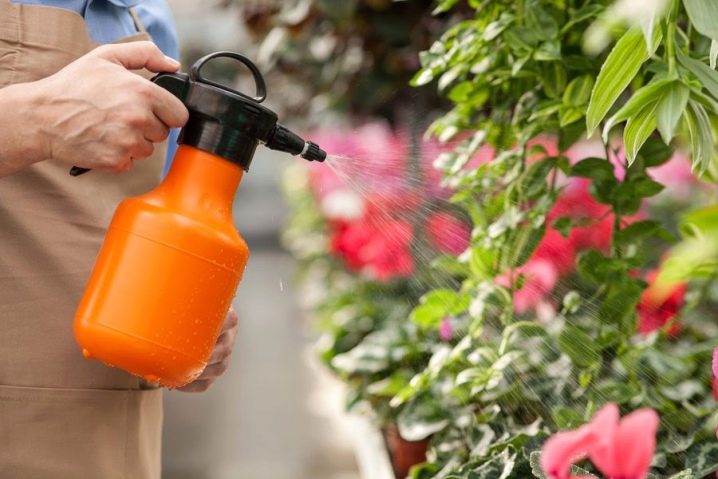
Blooming crop care
It is important to remove faded buds in a timely manner. If this is not done, the plant will lose strength. It will not be able to form new flowers. As for pruning the bush, this is not required. The culture itself has a dense and neat shape.
If the florist still wants to change the plant, you can safely trim it: the culture calmly reacts to such manipulations.
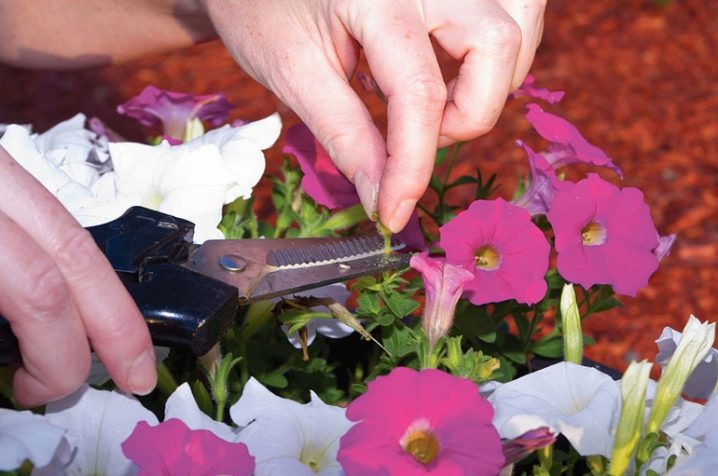
Reproduction
Since the culture is a hybrid, it itself cannot form viable seeds. Therefore, propagation material can only be obtained from the store, where it comes from breeding organizations. For a successful landing, a number of steps must be taken:
- take a shallow container;
- pour light soil into it;
- pour warm clean water;
- spread the seeds over the ground, maintaining a distance of about 4 cm (you do not need to cover them with earth);
- cover the planting with glass or film (you can also use agrofiber, which will allow you to better maintain optimal humidity);
- put the container in a well-lit place (in some cases additional lighting may be required);
- provide a temperature of about 20-22 degrees.
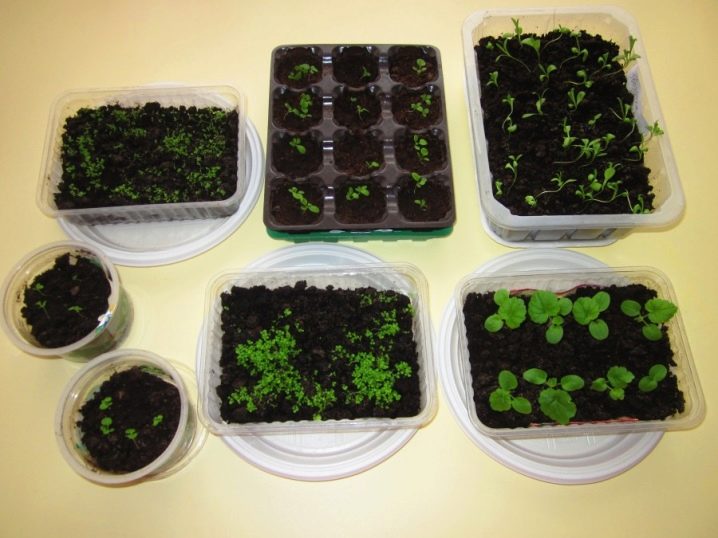
Sowing of seed begins in early February. The latest date for such an event is early March. Shoots can be seen usually in 10-14 days. Frillithunia needs full daylight hours. If there is not enough natural light for 13-14 hours, it is worth using additional sources. These are phyto lamps or fluorescent devices. Lighting devices are placed at a distance of about 10 cm from young plants.
Watering should be done very carefully. Using a medical syringe is a good solution.Using the drip method, gently moisten the soil under each plant. You cannot spray seedlings. When 2 leaves are formed, young flowers dive. Since the culture is tender, a double pick is carried out.

Plants are first placed in cassettes or boxes. After a while, they are transferred to separate containers. Seedlings are planted in May or early June (when the threat of frost has passed). The distance between flowers should be at least 20 cm. The growing process is accompanied by the processing of seedlings with special means to improve growth and development. Usually used "Kornevin" and "Fitosporin".
What frillitunium is and how to plant it is described in the video below.







































































































The comment was sent successfully.